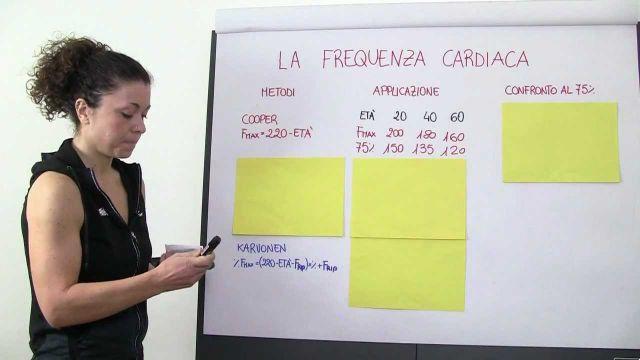
Introduction
Il calculation area of heart rate (HR or HR) is one of the most used empirical estimates in the world of sport and fitness.
Evaluate correctly the right rhythm of the heartbeat with respect to the current workout, aims to improve specificity of the training stimulus.
Muscles, organs and entire systems, when hyperactivated, increase their own best before date energetic and oxygen. As this demand increases - and the need to excrete or metabolize some "waste" substances - consequently increase thecommitment broncho-pulmonary and cardio-circulatory.
In practice, since heart rate - measurable in pulses or beats per minute (bpm) - is directly related to the degree of fatigue general, by controlling it it becomes possible to "manage" theintensity of the effort and therefore the internal training load.
But be careful, we are not saying that bpm increase proportionally and linearly to the degree of fatigue; they exist real metabolic limits e systemic which, rising in intensity, alter this relationship.
We are basically talking about the intertwining of aerobic and anaerobic lactacid capacities beyond the anaerobic threshold, which support the effort from low intensity up to maximum oxygen consumption.
The training of endurance disciplines, such as running, cycling, rowing etc. focuses precisely on the management of these limits, enhancing one metabolic life rather than the other. Here, based on the objective of the training, a certain degree of intensity and the relative heart rate are established.
In this article we will list some simple formulas, validated internationally, for determining the Maximum Heart Rate and Exercise Prescription.
Formulas
Calculation of the maximum heart rate
da: M. Armeni: "A.C.S.M.-I.S.S.A. Research Manual" 2001-2007s
Formula of cooper
- HRmax → (220 - age in years)
Formula of Astrand
- For women: HRmax → (226 - age in years)
- For men: HRmax → (220 - age in years).
Other researchers propose a different formula for adults:
- HRmax → 210 - (0,5 x age in years).
Formula of Read and all.
- Training HR → (180 bpm - age in years) + 5 beats for each decade of age starting from the third decade of life.
Formula of Karvonen (Heart Rate Reserve) also called the heart rate reserve formula
- HRR → [(220 - age - RHR) x% of chosen intensity] + RHR
Formulas of the Ball State University, very popular in the USA
- HRmax → 214 - 0.8 x (age in years) for men
- HRmax → 209 - 0.7 x (age in years) for women.
Formula of the second "pulse rate" Martin et.Al (1989)
- Training HR → HRmax - (0.45 x HR at rest).
Formula of Tanaka
- HRmax → 208 - (0.7 x age in years)
Formula of Mellerowicz (1985)
- HRmax → (170 b / min - age in years) for adults
- HRmax → (180 b / min - age in years) for the youngest.
Formula of Cerretelli, for both sexes
- HRmax → 216 - (1.1 x age in years).
Formula for determining the HR training optimal e subjective
- HR training → HR rest + 0.6 x (HR max - HR rest).
Formula for calculating HR training in swimming
- [(% FCmax prescritta) x (HRmax -13*)]
* where 13 is a fixed correction factor
Conconi test
Test with increasing loads, correlates the presumed HRmax detected in the so-called deflection point to the presumed anaerobic threshold; however, this is not correlated with the estimated HRmax in sedentary tests.
This test cannot therefore be taken as a model for a FT (Fitness Test), but only for athletes, and also with reservations.
Note: for the prescription of exercise intensity it is always and in any case, as a general rule, to never exceed 200 b / min in both males and females


























